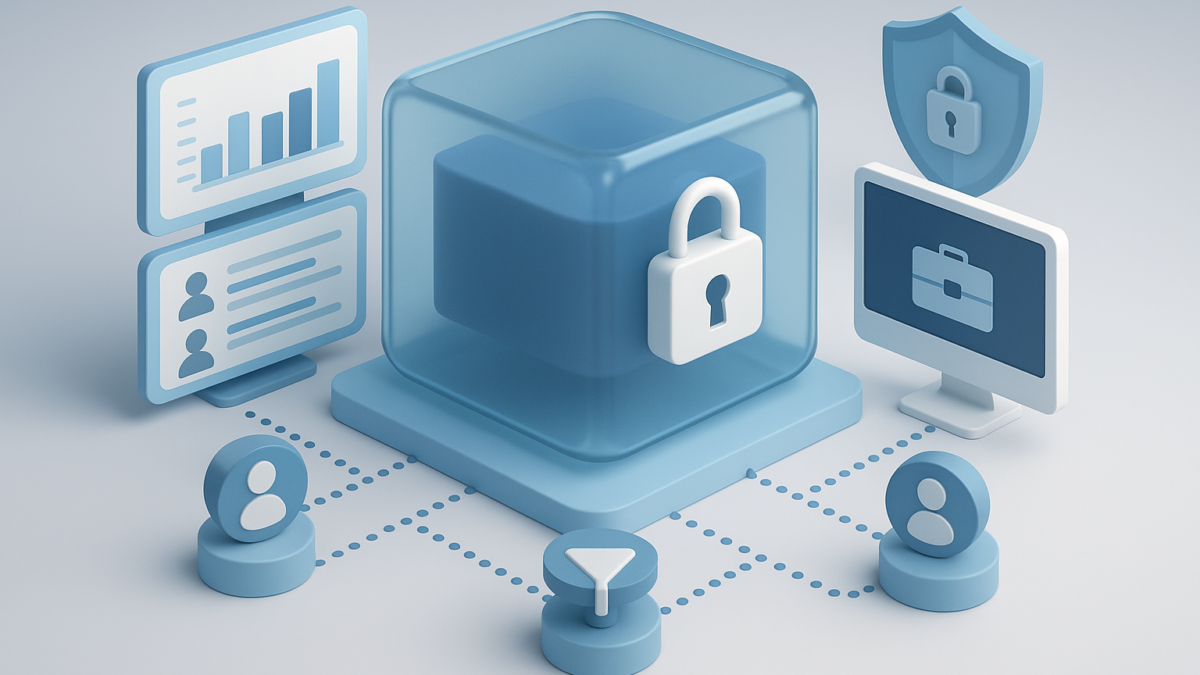Data Clean Rooms: The Future of Privacy-Safe Lead Generation in B2B
Table of Contents
The B2B marketing landscape is rapidly evolving. With the rise of GDPR, CCPA, and cookie deprecation, traditional methods of capturing and analyzing customer data are under scrutiny. Businesses can no longer rely solely on third-party cookies to understand buyer behavior.
Enter data clean rooms—a revolutionary way to generate and qualify leads while keeping privacy and compliance intact. These secure environments allow brands to collaborate on data insights without exposing raw customer data. For B2B marketers, they’re not just a solution—they’re the future of privacy-safe lead generation.
What Is a Data Clean Room?
A data clean room (DCR) is a secure, privacy-compliant platform where multiple organizations can pool their data to gain shared insights without revealing personally identifiable information (PII).
Think of it as a neutral meeting ground:
- Company A shares data about its customers.
- Company B does the same.
- The clean room provides aggregated insights that both parties can use—without exposing sensitive data.
For B2B, this means marketers can understand buyer behavior, measure campaign effectiveness, and identify lead opportunities—all while respecting data privacy regulations.
Why Data Clean Rooms Are Gaining Traction
Several factors are driving the adoption of DCRs in B2B:
- Data Privacy Regulations
- GDPR, CCPA, and India’s DPDP Act demand higher levels of compliance.
- DCRs ensure secure, anonymized collaboration.
- Cookie Deprecation
- With Google phasing out third-party cookies, marketers need alternatives.
- Clean rooms offer a privacy-first replacement.
- Demand for High-Quality Leads
- B2B marketers need insights into real buyer intent.
- DCRs allow cross-platform matching of data to identify prospects more accurately.
- Partnership Ecosystems
- Collaborations between publishers, platforms, and brands thrive in clean rooms.
- This strengthens account-based marketing (ABM) strategies.
How Data Clean Rooms Enable Privacy-Safe Lead Generation
1. Secure Data Collaboration
Companies can compare and overlap customer data without exposing raw files. For instance, a SaaS provider and a media platform can identify shared audience segments without breaching compliance.
2. Improved Targeting Accuracy
By pooling anonymized datasets, B2B marketers can create precision-based audience segments for campaigns. This ensures leads are more relevant and higher quality.
3. Attribution & ROI Measurement
Clean rooms help track which campaigns truly influenced conversions. Instead of relying on guesswork, marketers get multi-touch attribution insights—crucial in complex B2B buying journeys.
4. First-Party Data Maximization
With cookies disappearing, first-party data is king. Clean rooms let businesses combine and enrich their own datasets with partner data—unlocking deeper insights.
Real-World Example: Google & Amazon’s Data Clean Rooms
- Google Ads Data Hub (ADH): Lets advertisers analyze YouTube and campaign performance without exposing user-level data.
- Amazon Marketing Cloud (AMC): Provides advertisers with insights into shopper behavior while protecting user privacy.
Both show how DCRs are not theory—they’re already shaping the future of marketing and lead generation.
Step-by-Step Guide: Implementing Data Clean Rooms for B2B
- Define Your Goals
- Are you aiming to improve lead quality, measure ROI, or strengthen ABM campaigns?
- Choose the Right Platform
- Options include Google ADH, Snowflake, Habu, or Infosum.
- Build Strategic Partnerships
- Collaborate with publishers, industry peers, or platforms that share audience overlap.
- Ensure Compliance & Security
- Work with providers who adhere to GDPR and enterprise security standards.
- Test, Measure, Optimize
- Start with a pilot campaign.
- Measure lead quality and ROI improvements.
- Scale gradually.
Benefits of Data Clean Rooms for B2B
- Stronger Privacy Compliance – Stay ahead of global regulations.
- Higher Lead Quality – Access deeper, anonymized buyer insights.
- Better ROI Tracking – Understand which campaigns really deliver.
- Collaborative Growth – Build partnerships without risking sensitive data.
The Future of B2B Lead Generation with DCRs
By 2027, Gartner predicts that 80% of advertisers with media budgets over $1B will use data clean rooms. In B2B, this means privacy-first collaboration will soon be the industry standard.
As data becomes more regulated and buyers more cautious, the ability to deliver relevant, personalized, and compliant lead generation will separate the winners from the laggards.
Final Thoughts
The B2B lead generation playbook is being rewritten. Traditional cookie-based strategies are fading, and data clean rooms are emerging as the privacy-safe solution to fuel growth.
For marketers, the message is clear: adopt early, experiment, and integrate clean rooms into your data strategy. Doing so ensures your lead generation remains future-proof, compliant, and effective.
Call-to-Action (CTA)
Ready to future-proof your B2B lead generation strategy?
Explore our B2B Lead Generation Services and discover how we help businesses capture high-quality leads in a privacy-safe way.
For more on industry best practices, check out Whitepaper Lead Generation and see how thought leadership fuels smarter campaigns.





